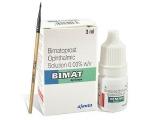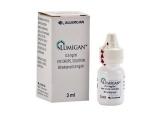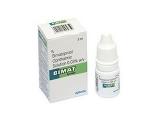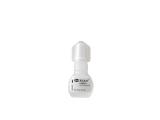Glaucoma: Eye Drops, Other Treatments, Symptoms, Causes & More
Glaucoma is an eye disease that is often associated with an increased intraocular pressure (IOP), in which damage to the optic nerve can lead to loss of vision and even blindness. This is the leading cause of irreversible blindness in the world.
What is the best eye drop for glaucoma?
Eye drops help stop the progression of disease and as a result prevent vision loss.
There are various eye drops used to treat this disease:
- prostaglandin analogues – they increase the outflow of fluid from the eye. There are several similar drugs and you can choose the most effective one;
- beta-blockers – they lower intraocular pressure (IOP) by reducing fluid production. They are very effective in primary and secondary form of the disease, their price is low, and these drugs do not have severe side effects;
- alpha-adrenergic agonists – they reduce the production of aqueous humor and increase its outflow;
- carbonic anhydrase inhibitors – they lower intraocular pressure by reducing the production of aqueous moisture;
- combination drugs – are used for patients who need more than one type of medicine.
Prostaglandin analogues (Bimat, Careprost, Lumigan, Bimatoprost, and Xalatan) are considered the best eye drops for glaucoma and therefore are prescribed more often than others.
Where to buy eye drops for glaucoma online?
The catalog of our online pharmacy presents a wide selection of best drops for lowering IOP. They quickly reach the optic nerves and have a therapeutic effect on them.
All drops gently act on the entire surface of the eye, protecting them from redness and dryness. All meds are produced in convenient bottles which makes them easy to use.
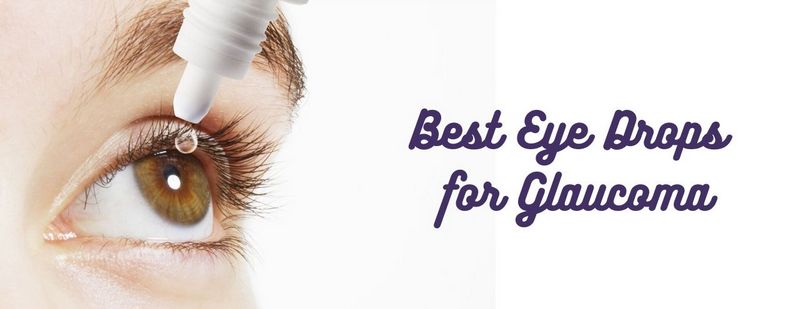
Here you can buy the best eye drops for glaucoma based on bimatoprost and latanoprost, such as Bimat, Careprost, Lumigan, Bimatoprost, Xalatan. There are also options with applicators that can also be used to treat hypotrihosis of the eyelashes. We specialize on generic products so all the mentioned treatments can be purchased at the lowest price. Just place an order and we will deliver the order right to your home door. Millions of patients have already appreciated the services of our online pharmacy.
Before you buy any eye drop, be sure to consult an eye specialist who will confirm the diagnosis and select the best treatment for this disease based on your condition, health, age, and body features.
What is glaucoma?
Glaucoma is an extensive group of eye diseases characterized by constant or periodic increased intraocular pressure, optic atrophy with the subsequent development of typical visual field defects and decreased visual acuity. This disease takes a leading place among the causes of irreversible blindness. Vision decreases smoothly, and therefore the patient most often sees changes in visual functions in the advanced stage of the disease.
In this case, vision decreases until the onset of blindness, which is irreversible, as the optic nerve dies. It is already impossible to return the vision to a blind man for this reason!
Early diagnosis and treatment of this disease can compensate for the course of the ailment, prevent damage to the optic nerve and the associated loss of vision. Therefore, it is very important to be regularly examined by competent eye specialists.
Watch a video that will help you better understand the definition of glaucoma:
What causes glaucoma?
The main cause of the disease one is an increase in intraocular pressure (intraocular hypertension). Other common causes include:
- Genetic predisposition – the disease can be transmitted by inheritance;
- Abnormalities of the fetus – in this case, the ailment will be congenital;
- Myopia – it causes open-angle form of the disease;
- Hyperopia – it causes angle-closure disease;
- Systematic use of steroid drugs;
- Eye diseases – inflammation (uveitis, keratitis, scleritis, etc.), dystrophic changes (progressive atrophy of the iris, transferred hemophthalmos);
- Thin cornea – this physiological feature is noted in many patients;
- Injuries – various injuries (burns, wounds, concussions) provoke difficulty in draining intraocular fluid;
- Diabetes mellitus – it gives a complication in the form of diabetic retinopathy;
- Cataract – if surgical treatment is not completed in time, the enlarged lens will block the outflow of moisture;
- Complications after ophthalmic surgery;
- Neoplasms (tumors).
Signs and symptoms
Many people wonder “what is the first sign of glaucoma?” At the initial stage, the ailment is almost asymptomatic and causes no discomfort to the patient. There are no complaints of visual impairment or pain. Occasionally patients experience iris circles in front of the eyes, but this symptom is characteristic of many diseases. Unfortunately, irreversible changes in the optic nerve may develop at this initial stage. Such latent development leads to late medical help. Pathology can be detected in a timely manner only with regular preventive eye examination.
Further development of undiagnosed ailment leads to complaints. A patient may complain of peripheral vision. This is the so-called “tunnel” vision. It develops asymmetrically, that is, one eye suffers more than the other, although both are affected. Other symptoms may include:
- impaired vision at dusk;
- a translucent or opaque spot in the field of view;
- it takes more time to adapt the eyes to darkness;
- drop in visual acuity;
- a violation of the correct perception of the color gamut.
Patients with angle-closure glaucoma hare more pronounced symptoms, especially during an acute attack, when intraocular pressure rises sharply. The patient complains on:
- fog before eyes, blurred vision;
- redness of the eyes;
- sharp pain in the eye;
- headache in the frontal and temporal areas;
- lacrimation and photophobia;
- nausea, vomiting.
Often, patients confuse an acute attack of glaucoma with migraine, hypertension, poisoning. You can recognize an attack of the eye disease by one characteristic feature: due to a sharp increase in intraocular pressure, the eyeball becomes very hard and dense. The pupil at this time is dilated, irregular in shape, eyelids are swollen, cornea becomes cloudy. In this condition, you need to seek medical assistance as soon as possible.
Is glaucoma hereditary?
Yes, there is a hereditary predisposition to this disease. This is confirmed by the presence of pathology in close relatives and members of the same family.
One can inherit the anatomical features of the eye structure, for example, the structure of the angle of the eye, as well as myopia and hyperopia of a high degree, which can also predispose to an abnormally high pressure in the eyes.
But we are not an exact copy of our parents, so the chances of passing the disease to your children are not so great. However, if the family has other blood relatives with such a pathology, then the likelihood of the disease is higher. Moreover, this risk is more significant in first-line relatives.
Types of the disease
There are several classifications of glaucoma by certain parameters, such as origin, time, mechanism or stage of development, level of intraocular pressure, and course.
By origin:
- primary – a disease that develops on its own;
- secondary – develops as a consequence or complication of another disease.
By development time:
- congenital (develops before the age of 3 years);
- infantile (diagnosed in children from 3 to 10 years old);
- juvenile (occurs in the interval from 11 to 35 years);
- adult.
By the level of intraocular pressure:
- hypertensive – accompanied by high intraocular pressure;
- normotensive – intraocular pressure within normal limits.
By the development mechanism:
- open-angle;
- angle-closure;
- glaucoma with impaired development of the anterior chamber angle.
By the stage of changes in the optic nerve:
- initial – the boundaries of the visual field are normal or slightly narrowed, this is the most favorable stage for starting treatment;
- developed – narrowing of the field of view does not exceed 10 degrees, clinical symptoms appear, which facilitates diagnosis;
- far-reaching — it has been developing for several years, there is a deterioration in vision, it requires frequent monitoring and a serious reduction in intraocular pressure;
- terminal – vision is completely lost or only light perception with the wrong light projection is saved.
By the flow:
- stabilized – no deterioration occurs within six months of medical monitoring;
- unstable – progressive deterioration.
Angle-closure vs open angle glaucoma
Angle-closure glaucoma is a very serious disease, in which a patient periodically suffers from acute attacks of a sharp increase in intraocular pressure, accompanied by headache, double vision, a rainbow “halo” around luminous objects, heaviness in the eyes, nausea and vomiting. An eye specialist can clearly see corneal edema, dilatation of the episcleral vessels, protrusion of the iris of the anterior chamber, and the dilated pupil. IOP is increased to 60 mm Hg. This condition is considered an acute attack and requires urgent medical attention since a patient can go blind in a few hours;
Open-angle type of the disease develops gradually. The deterioration of the fluid outflow leads to the blockage of the drainage channels and an increase in the intraocular pressure (IOP), which leads to a deterioration in peripheral vision. Symptoms with this eye pathology are insignificant, and sometimes they may be absent at all. Patients complain of minor headaches, “rainbow shine” around light sources and dull pain in the eyes.
Glaucoma vs cataracts
Cataract is a pathological eye condition associated with clouding of the lens. Glaucoma is a disease associated with an increase in intraocular pressure.
Despite the fact that each of the diseases can causes serious eye disorders and even loss of vision, their degree of danger is not the same. The difference between cataract and glaucoma is as follows: cataract affects only the lens of the eye. It changes its structure, as a result of which the crystalline lens loses its transparency. This causes visual defects in humans.
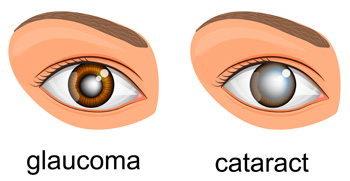
Fortunately, today this problem can be successfully resolved. Patients with the initial stage of diseases usually use special eye drops that contribute to the resorption of turbidity. But the most effective method of overcoming cataracts is a relatively simple surgery to replace a lens that has lost its function with a transparent lens. This procedure allows to restore the vision.
Glaucoma, in turn, affects the entire eye. It is dangerous becauseit can cause the death of the optic nerve. How does this happen? The reason for this is the accumulation of fluid in the eye due to a violation of its outflow and sometimes due to its increased production. This causes high eye pressure, the effect of which extends to the optic nerve. If the nerve fibers completely atrophy, the eye ceases to see.
What is the difference between cataract and glaucoma? Patients with cataracts have a chance to restore their vision. But if glaucoma caused blindness, it is already impossible to correct this condition, unfortunately. In this regard, you should start treatment of such a serious disease as early as possible. Therapy for this condition is aimed at normalizing the pressure in the eye. The patient can select the appropriate eye drops, such as Lumigan, Bimatoprost, Bimat, Careprost, or Xalatan. If the prescribed medications do not help, surgery is indicated.
It should be emphasized that often cataracts and glaucoma exist independently of each other. But sometimes one of these diseases causes another. So, cataracts can independently develop with age or as a result of trauma, but in some cases it is a complication of glaucoma. Conversely, a possible densification and enlargement of the lens during cataracts can provoke an increase in eye pressure, which often causes glaucoma.
How else can I treat this disease?
In the late stages of the disease, drug therapy will not last long. Therefore, in such cases, you have to resort to surgical treatment.
Radical impact
- Sclerectomy. It is used for open-angle type of the disease. This is an effect on the intraocular structures that improves the outflow of chamber fluid;
- Implantation of an intraocular lens. It is used for angle-closure form of the disease;
- Canaloplasty. Insertion of a small catheter to remove fluid;
- Trabeculectomy. It also increases outflow by removing the trabecular meshwork and suturing;
- Laser surgery. The use of laser technology for the intervention.
Home cures
Natural remedies can hardly cure the disease. However, the use of traditional medicine methods is possible in combination with eye drops or during the recovery period after surgery. In addition, home remedies well help prevent the pathology. The experience of generations can be successfully used to maintain eye health. Mummy is one of the traditional medicine, which is often used to treat glaucoma. Often, hirudotherapy (treatment with leeches) helps to get rid of the disease. However, this method is not suitable for everyone, and it should be practiced only after consultation with an experienced doctor. Another popular folk remedy for treating the disease is herbal supplements. Keep in mind that self-medication can be dangerious!
Marijuana
Another way to treat this disease is marijuana. But how does marijuana help glaucoma? The answer is simple: cannabinoids affect myocardial contraction. So, cannabidiol has therapeutic potential in combination with another substance tetrahydracannabinol. Their union relieves pain and nausea and also lowers both arterial and eye pressure. Despite the results of experiments and studies, doctors in different parts of the world consider cannabis use to be less effective in the fight against eye diseases than conventional medicines.
Can glaucoma be cured?
If there is a suspicion that a person has this ailment, then it is necessary to determine the stage of the disease during an examination with a specialist. The doctor will decide on how to cure the patient. At the initial stage of the disease, it is possible to treat the disease without surgery, using the so-called conservative method. Therapy includes special eye drops that lower the pressure inside the eye, improve the outflow of fluid passing through the eye, or reduce its secretion.
This treatment will help if a patient has open-angle type of ailment, when there are no changes in the structure of the eyes. If the patient is diagnosed with angle-closure type of the disease, then the drugs are almost useless. In this cases, surgical methods of treatment are indicated. They can treat angle-closure glaucoma both at the initial stage and at later stages.
Glaucoma in children
Children’s glaucoma is a rare eye disease, which is one of the main causes of irreversible blindness at an early age. Only timely treatment will help maintain vision. The best methods of treatment can only be selected by an eye doctor after a thorough examination of the child’s visual system.
There are several causes of this disease in children. These are heredity, as well as circumstances affecting the fetus. The onset of the disease can be provoked by:
- bad habits, infectious diseases of the mother during pregnancy;
- fetal hypoxia;
- irregular eye structure;
- general diseases of the child;
- mechanical injuries of the pregnant abdomen.
The main symptoms of glaucoma in children are enlarged eyeball, corneal distortion, photophobia, deepening of the nerve disc, eye pain.
The disease is asymptomatic at the initial stages, so a visit to an ophthalmologist from the very beginning of life is mandatory.
Surgery aimed is a radical and most effective treatment for this ailment in children.
Glaucoma in dogs and cats
Cats and dogs can also be diagnosed with this eye disease. This is one of the most “insidious” and difficult to treat ophthalmic veterinary diseases.
Signs and symptoms of glaucoma in dogs and cats include:
- an increase in the eyeball size;
- expansion of the pupil;
- cloudy cornea;
- lacrimation;
- photophobia;
- redness of the sclera;
- corneal edema;
- optic atrophy, etc.
In dogs and cats, this disease can also lead to complete blindness!
Dogs and cats can suffer from congenital (malformations), primary (open-angle, closed-angle), and secondary glaucoma (post-traumatic, post-vein, phacogenic, etc.).
So, the reasons that can cause an increase in IOP in cats and dogs are:
To diagnose this disease, it is necessary to carefully collect the anamnesis, to evaluate the clinical picture of the eye. A vet doctor performs special studies.
Unfortunately, most visits to the veterinary ophthalmologist occur in advanced stages, when the cause of the the disease cannot be established. At the same time, preservation of vision and eye function is not possible.
Nevertheless, treatment in the early stages of the disease brings success and inhibits the development of the pathology. Specialists prescribe medicines to lower intraocular pressure and reduce the production of intraocular fluid. Sometimes the progression of the ailment can be restrained for a long time.
In advanced stages, drug treatment is ineffective and only a surgery can be help:
- laser surgery (endoscopic cytophotocoagulation);
- installation of drains and valves;
- evisceration;
- enucleation;
- eyeball prosthetics, etc.
If your pet has the first symptoms of the disease, you should urgently contact a veterinary clinic!
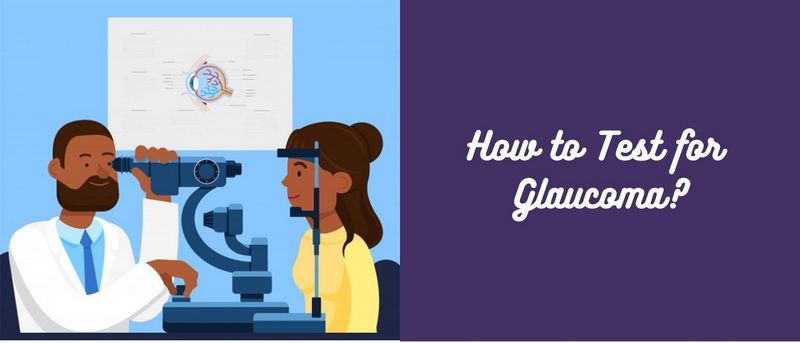
How to test for glaucoma?
Only an eye specialist can make a correct diagnosis. Timely diagnosis of this disease is carried out according to the following research methods:
- Dynamic contour tonometry – ultra-precise measurement of intraocular pressure with an ophthalmic tonometer. Tonometry can be performed using an apparatus that is suitable for independent outpatient measurement. This makes daily tonometry possible, which greatly simplifies the choice of medications;
- Optical coherence tomography (OCT) – assesses the state of the retina and optic disc, this is the most effective method in modern ophthalmology. The scientific work of specialists clearly demonstrates that OCT is a leading technique in determining the initial form of the disease;
- Digital flicker perimetry – an innovative method of studying visual field. It detects eye disorders in the preclinical period;
- Ophthalmoplethysmography – the basic method for the diagnosis of blood supply, based on continuous monitoring of the volume of the eyeball;
- Tonography – determination of intraocular fluid movement and pressure with simultaneous graphic recording.
What foods to avoid if you have glaucoma?
The following foods are not recommended for patients with IOP:
- Fatty soups and concentrated broths;
- Spices;
- Strong tea;
- Coffee;
- Bakery products;
- Canned pickled products, pickles;
- Liver, lungs, kidneys and other offal;
- Alcohol-containing drinks.
The above list of food products is unified. An optimal diet can only be prescribed by a doctor who will take into account the patient’s condition and concomitant diseases.
And here is a list of foods that are recommended for all patients with glaucoma:
- Whole milk;
- Sour-milk products (cottage cheese, cheese, yoghurts, etc.);
- Cereals (oat, wheat, buckwheat);
- Soups (low-fat on meat broth or vegetable);
- Soy products;
- Fruits and vegetables;
- Beans, peas, other legumes;
- Low-fat meat;
- Fish.
You should also monitor the fluid intake: you should not drink more than 1.5 liters of water per day.
How to prevent glaucoma?
Preventive measures will help reduce the damage that increased pressure causes to the visual system, thereby preventing optic atrophy and blindness.
- Do not overwork – limit both physical and psycho-emotional stress;
- Do not keep your head bowed – it is harmful to engage in activities that require a long tilt of the head down. This applies to reading, drawing, sketching, knitting, and others. It is necessary to maintain an even head position when working at a computer, watching TV;
- Set the right lighting – it is dangerous to work in poor lighting. It is important to make it bright so as not to strain your eyes;
- Refuse bad habits – smoking negatively affects the blood supply to the whole body. It disruptes transportation of oxygen and nutrients to all elements of the eyeball;
- Choose loose clothing that does not disturb blood circulation in the neck and head;
- Avoid visual fatigue – while working at a computer, reading and watching movies, it is important to take breaks. It is recommended to allocate 15-20 minutes for rest every hour;
- Eat right – you need to eat enough vegetables, fish, fruits, and to reduce the amount of animal fats and sugar;
- Consume moderate amounts of water and other drinks. Do not drink more than one glass of any liquid at a time. To ensure safety, you can check the reaction to coffee or green tea: measure the pressure before and after;
- Have a good rest, good sleep, walk in the open air in the evening. It is necessary to sleep on comfortable pillows. After waking up,do a warm-up without getting out of bed;
- Do not refuse medical treatment;
- Avoid a sharp change in lighting — a change in the intensity of lighting is a heavy burden on the eyes;
- Constantly monitor your condition. Even if you have stable intraocular pressure, you need to visit a doctor at least four times a year.
These measures will help to avoid not only glaucoma but also other diseases of the visual system. It is recommended that everyone follows the above-mentioned recommendations since the disease can develop even in an absolutely healthy person.
